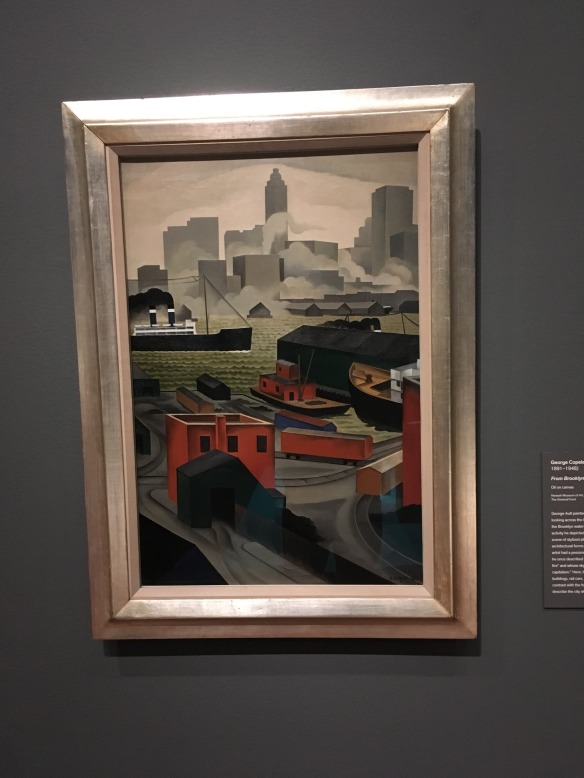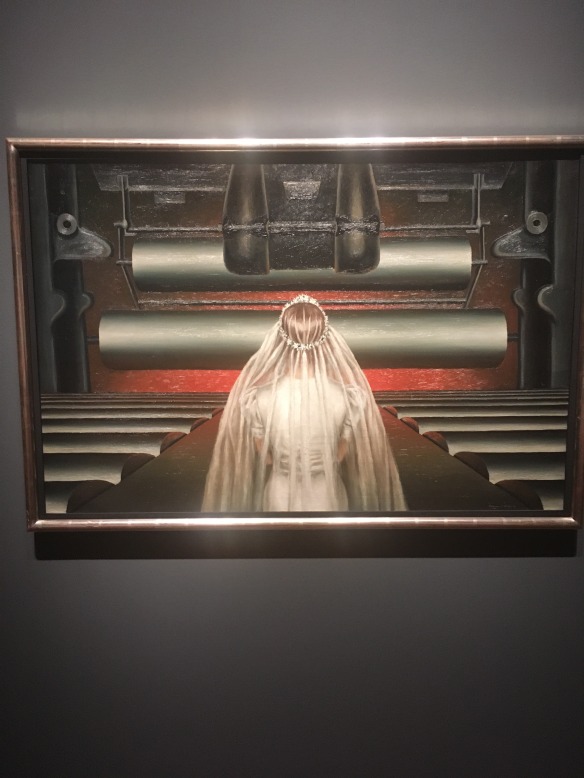The de Young museum has its Cult of the Machine show on. Machines: futurists loved them; Constructivists praised them; Precisionists fetishized them, or, at least, some of them did. Charles Scheeler, Charles Demuth sure did love ’em. The show gives them their due and they deserve it. Scheeler, in particular, reveres the majesty and mystery of machines, industry, power as an alchemist’s brew of transformation. It even transforms humans right out of the picture. His and most of these guys pictures are of industrial might, not as menacing but majestic, sublime, beyond our capacity to fully appreciated even if we created it.
But the show has an underbelly. They’re the works that fascinated me for having some sense, as some do now, of what lurks beneath the utopian dreams, the ones heard now of a world of communication, connection and Friends(hips).
They saw things a little differently.

Void of humans but abristle with energy and motion, there is an ambiguity at work. Seen from on high, the New York city waterfront runs like a ribbon through a tissue of industry, but one that sends up signals of smoke and steam whose meaning is unclear. Perhaps the ambiguity is what convinced Georgia O’Keefe to move to New Mexico.
And then there’s this:

In this work by George Ault, factory and ship smoke, white and black, obliterates whatever lies beyond it. And the far shore is entirely grey with waterfront wharves and buildings that seem to emerge from or plunge into the water. Up close it is as if the water swallows the buildings; man has not fully emerged from his watery beginnings.

Here, O’Keefe captures two great, black monoliths and a white one beyond, all dwarfing the silvery moon that sneaks out between them all. Boldly bleak, capturing the canyon like enormity of New York, it also lacks warmth or comfort, a far cry from the desert world of flowers she later turned to.

Ault didn’t see the rural American of the ’30 as much better. Black, devoid of any enlivening detail, absent humans, a warped and pointless fence, the shapes and geometry that give the city its dynamism appear here more as a sepluchral loss than a rustic retreat.

With a little hint of mischief the show also includes this shot of Imogene Cunningham and the model Twinkie where Cunningham appears as if she might be coming upon Susanna before the elders find her. Her camera seems to be the main link to the other works and the humor of the shot is largely absent elsewhere, save for the inevitable clip of Charlie Chaplin caught in the gears and cogs of an assembly line from Modern Times.
And for a finale,

Charles Holbrook Carter’s War Bride, faceless and alone before the altar, or machinery (of the church?), with pews that look like aircraft hangars and two gear works on either side that could be totems from another era. Who gets to marry the machine? Who is left behind? Can anyone survive the marriage of heaven and hell, or man and machine–questions we seem to ask in one form or another every day.
